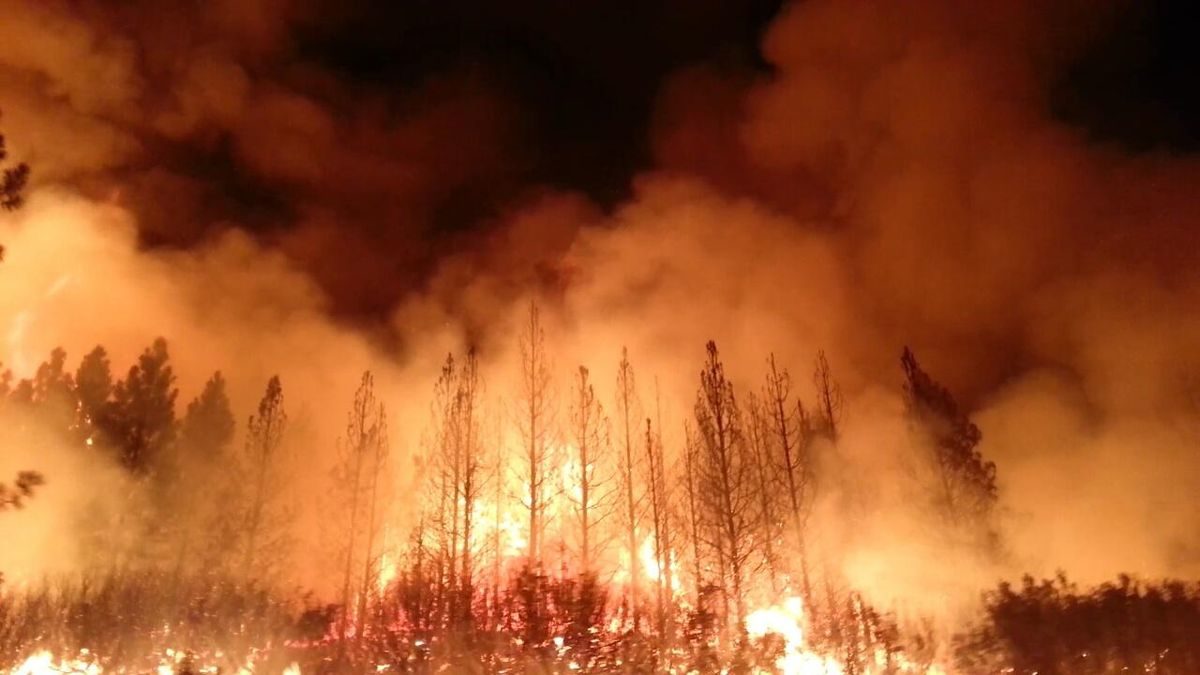Our quaint habit in the United States of stringing power lines overhead is not only the main cause of power failures. It’s also causing fires.
An October press release by the California Department of Forestry and Fire Protection cites “a high wind in conjunction with the power line sag on two conductors” as the cause of the cause of the Cascade Fire in Yuba County, which burned nearly 10,000 acres.
In this case, when the two lines came into contact they created an electrical arc, which “deposited hot burning or molten material onto the ground in a receptive fuel bed”, a situation which the department describes as “line slap”.
This press release was cited by Sunrun in a new white paper where it describes the fire dangers posed by power lines, but also the solution: increased deployment of rooftop solar and batteries at homes and businesses, along with community microgrids.
“Today’s aging energy infrastructure is ill-equipped to deal with the impacts and risks of a changing climate,” states Anne Hoskins, Sunrun’s chief policy officer. “We need modern, bold solutions to transform the way that our electricity system works – providing power where people live and work.”
Lower risk from DG
Specifically, the report notes that networked distributed energy resources, like distributed solar and batteries, in remote communities can reduce the amount of power on transmission and distribution infrastructure and lower the risk of power lines sagging and sparking wildfires.
This isn’t rocket science, but it is something that utilities have been staunchly resisting, as under Cost of Service Regulation they make their money by deploying infrastructure, and an even higher margin by building power lines due to extra incentives set at the federal level.
But while this system appeared to work for a system based on large conventional generation, it isn’t necessary anymore than all of a customer’s power come form large, distant plants.
California has one of the highest rates of adoption of distributed solar in the nation, behind only Hawaii. But in order to speed this further, Sunrun is asking for a few improvements. Specifically, the company is calling for:
- Elimination of the cap for developers on state storage incentives to allow for community-scale solutions to reduce wildfire risk
- raising storage incentives for lower-income Californians in wildfire-prone areas
- Passing the Solar Bill of Rights legislation
And in making this call to move to a system with more distributed generation, Sunrun is not alone. Michael Wara, the director of the Climate and Energy Policy Program at Stanford Woods Institute for the Environment also endorsed this approach.
We need to consider battery storage and solar as part of a toolbox to provide customer resilience in the face of the growing threat from wildfire. The catastrophic events of the past two years are forcing us to rethink how the electricity grid is built and operated. Clean, customer-sited energy storage and generation may be a key enabler of change and hence greater safety for California communities in at risk areas.
This content is protected by copyright and may not be reused. If you want to cooperate with us and would like to reuse some of our content, please contact: editors@pv-magazine.com.









Decentralized energy. BINGO!
Hot embers would be easily blown off tempered glass solar panels which do not burn either